










PASTA AMORE
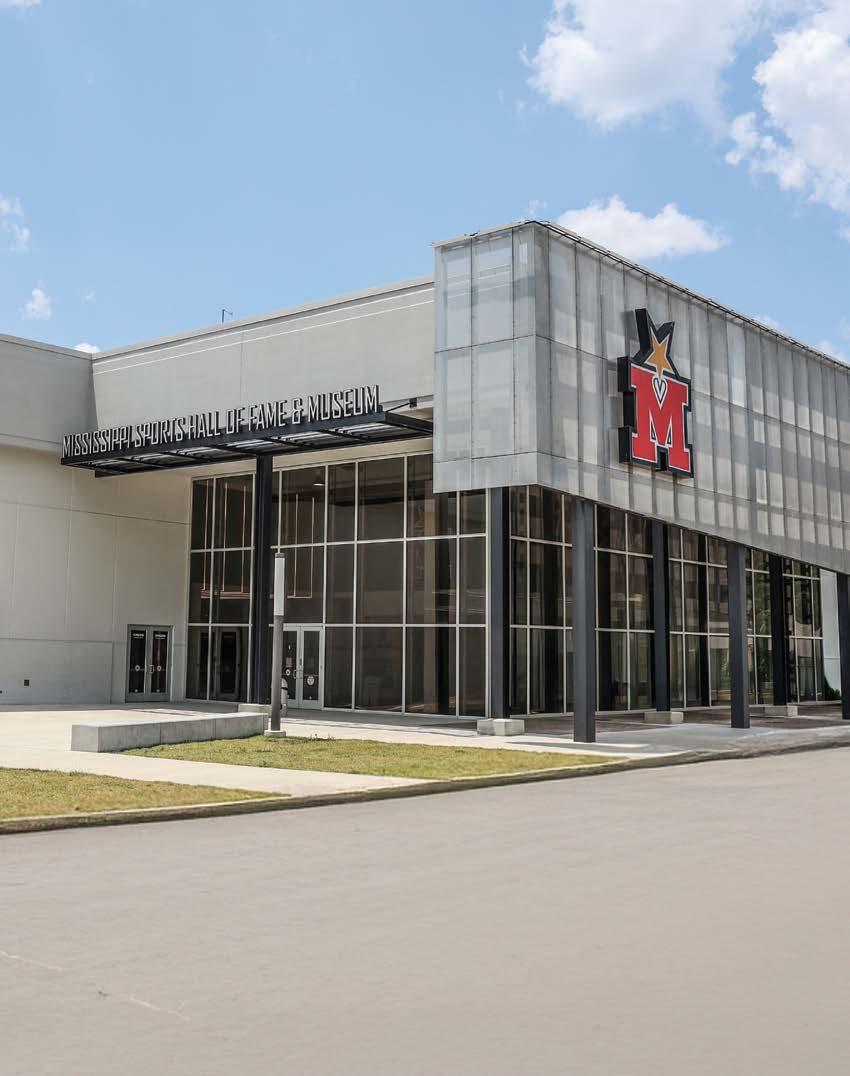

KATRINA: 20 YEARS AFTER


COLLEGE FOOTBALL PREVIEW






































PASTA AMORE


KATRINA: 20 YEARS AFTER


COLLEGE FOOTBALL PREVIEW


























My editor popped his head in the door and said, “Hey, one of this month’s stories is about the 20th anniversary of Hurricane Katrina. Why don’t you write a column about your experiences.”
Hmm, it’s hard to believe that it has been 20 years. I was the public service commissioner for south Mississippi back then. I was in the middle of my second term. I vividly remember meeting my district director Archie McRaney at our Hattiesburg o ce on the Saturday morning before the storm.
Things had changed overnight, and it appeared that the Mississippi Gulf Coast may be in the crosshairs. The storm seemed to be tracking more to the east, and hurricanes that make landfall in the northern gulf tend to jump east at the last moment. Our normal procedure was to set up a command post on the Gulf Coast. Now I like bad weather — I should be a storm chaser — but Archie, he had been in the National Guard and rode out Hurricane Camille on the Gulf Coast. He did not like hurricanes one bit. He looked at me and said, “Boss, if you tell me to go the coast, I’m handing in my resignation.” Needless to say, we used our Hattiesburg o ce as the command center.
To say Katrina was bad is an understatement. At least 238 Mississippians lost their lives. I have seen estimates that Mississippi’s insured property losses topped $13.6 billion dollars. I recall standing in the middle of Biloxi and Gulfport and not being able to identify where I was. There were no buildings, no signs, no landmarks, just piles of rubble and debris. I have heard a picture is worth a thousand words, but nothing compares to smells, and I know of nothing that smells like the aftermath of a hurricane. The sea has turned over and
has a unique and unfamiliar smell. There is a mixture of gas, dead animals, sewage, and sea air that combine to make an unforgettable and repulsive odor.
But the thing that sticks out most in my mind was Mississippians’ response to this disaster. They didn’t whine, cry, or feel sorry for themselves. Then Gov. Haley Barbour said, “We hitched up our britches and went to work.” We helped each other cut trees, repair homes, get food and water, and anything else that needed to be done. People patrolled their neighborhoods to keep order and look out for one another. I watched linemen give their lunches away to people who needed food. I saw spouses of utility workers come to the o ce and pack lunches, wash clothes, and do whatever they could to assist in restoring lights. As I watched chaos unfold in our neighboring state, I was proud of Mississippians’ response and how, collectively, we handled this disaster. While the news media covered New Orleans and the struggles there, many of us grew frustrated, but Gov. Barbour reminded us, “The press doesn’t cover planes that land safely, only the ones that crash,” and Mississippi wasn’t crashing. I believe it may have been one of Mississippi’s finest moments

by Michael Callahan
Executive Vice President/CEO Electric Cooperatives of Mississippi


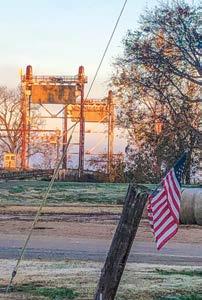
Speaking to everyone you bump into. Or better yet, walking past them in a store, sidewalk, getting gas, at the post office, bank, in an elevator, drug store, restaurant, walking down the church aisle on any Sunday, at a local school or game or even at a visitor’s school or game, local gyms and retail stores, funerals, or just going to other places in Mississippi, and always being appreciative and blessed of the place you were born in.
by Mark Doiron, a resident of the Village of Satartia, and a member of the Yazoo Valley Electric Power Association.

What’s Mississippi to you? What do you treasure most about life in our state? Send your brief thoughts to Today in Mississippi, news@ecm.coop or mail to P.O. Box 3300, Ridgeland, MS 39158. Submit your beautiful digital photo of life in Mississippi to Today in Mississippi, news@ecm.coop





The
how
The Official Publication of the Electric Cooperatives of Mississippi
Vol. 78 No. 08
OFFICERS
Brian Hughey - President
Brian Long - First Vice President
Shawn Edmondson - Second Vice President
Brian Clark - Secretary/Treasurer
Michael Callahan - Executive Vice President/CEO
EDITORIAL STAFF
Lydia Walters - VP, Communications
Steven Ward - Editor
Chad Calcote - Creative Director
Kevin Wood - Graphic Designer
Alan Burnitt - Graphic Designer
Jill Sowell - Graphic Designer
Whitley Daughtry - Graphic Designer
Chris Alexander - Member Services Coordinator
Andy Tuccio - Media Solutions Director
Steve Temple - Social Media Director
EDITORIAL OFFICE & ADVERTISING – 601-605-8600
For delivery questions or issues, call your local co-op.
Acceptance of advertising by Today in Mississippi does not imply endorsement of the advertised product or services by the publisher or Mississippi’s electric power associations. Product satisfaction and delivery responsibility lie solely with the advertiser.
• National advertising representative: American MainStreet Publications, 800-626-1181
Circulation of this issue: 442,702
Non-member subscription price: $9.50 per year.
Today in Mississippi (ISSN 1052-2433) is published 12 times a year by Electric Cooperatives of Mississippi Inc., P.O. Box 3300, Ridgeland, MS 39158-3300, or 665 Highland Colony Parkway, Ridgeland, MS 39157. Phone 601-605-8600. Periodical postage paid at Ridgeland, MS, and additional o ce. The publisher (and/or its agent) reserves the right to refuse or edit all advertising. The magazine is published for members of subscribing co-ops. The magazine is a bene t of membership.

www.facebook.com/TodayinMississippi www.todayinmississippi.com

A group of 84 high school juniors from across the state traveled to Washington, D.C. in June to attend the 2025 NRECA Youth Tour.
The trip was the culmination of the students’ participation in the Electric Cooperatives of Mississippi’s youth leadership program.

The program instills leadership skills in the students, informs them about the electric cooperative form of business, and teaches them about the democratic form of government at both the state and federal levels.
The students also had an opportunity to tour Capitol Hill with former U.S. Congressman Gregg Harper of Mississippi.
The students attended a Washington Nationals pro baseball game, experienced the play “Les Misérables” at The Kennedy Center, and had dinner during an evening cruise on the Potomac River.

While in Washington, D.C., the students and adult chaperones visited historic sites, monuments, museums, and had an opportunity to learn about the impact electric cooperatives have on their communities.







After years of advocacy by NRECA and electric co-ops, federal agencies are releasing new National Environmental Policy Act procedures that will simplify permitting of cooperatives’ energy and broadband projects.
The Cooperatives Youth Leaders program is fully funded — including the trip to D.C. — by the local electric co-ops as a commitment to molding future leaders for Mississippi, so they can impact the state and local communities.



The Trump administration’s new procedures, which reflect recent NEPA reforms from Congress and court rulings on the law, will benefit a wide range of co-op projects. Reviews under NEPA frequently take years to complete and are required when a project needs a government permit or receives federal grants or loans.
“The announcements deliver what we’ve been requesting for years— simplified, streamlined agency procedures that will allow us to more quickly get projects reviewed and approved,” NRECA CEO Jim Matheson said. “This change will benefit all 900 electric cooperatives and will help streamline many co-op projects from Rural Utilities Service loan applications, building new generation, expanding new distribution infrastructure and more.”
On July 1, updated NEPA procedures were released by the Departments of Agriculture, Commerce, the Interior, Energy, Transportation and Defense, the Federal Energy Regulatory Commission and the U.S. Army Corps of Engineers. The reforms will help expedite infrastructure development and cut project costs by:
• Setting deadlines and page limits on NEPA environmental reviews, as required by the Fiscal Responsibility Act of 2023 (two years and 150 pages for environmental impact statements; one year and 75 pages for environmental assessments).
For more information about the program, visit ecm.coop/ cooperative-di erence/cooperative-youth-leaders-program/.







• Clarifying that NEPA does not apply to every federal action.
• Allowing agencies to more easily create and adopt “categorical exclusions” for activities that do not have significant environmental impacts.
The new actions came after President Donald Trump directed the White House Council on Environmental Quality in January to provide guidance to agencies on simplifying and expediting the NEPA permitting process.
The new procedures also follow a recent Supreme Court decision clarifying that agencies generally must only consider the environmental e ects of the project they are reviewing rather than study indirect impacts beyond their authority. NRECA had filed a brief in the case urging better guardrails around the law’s application.
“For years NRECA has advocated for more e cient and predictable NEPA reviews and permitting processes that are essential for modernizing our nation’s infrastructure,” NRECA Regulatory A airs Director Viktoria Seale said. “This overhaul implements bipartisan amendments to NEPA in 2023 that will focus the scope of environmental reviews and expedite them.”
Co-ops have testified before Congress on the need for permitting reforms to help them meet growing demand for reliable, a ordable power and high-speed internet service. Many of their recommended reforms were included in the new agency procedures, including the time limits for NEPA reviews. – NRECA






I recently had the pleasure of visiting the backyard blu gardens of Paul and Donna Ingram, perched high above the winding Mississippi River in Vicksburg.
From the moment I stepped onto their property, I was struck by the sweeping views and the remarkable way their gardens seemed to flow seamlessly with the natural beauty of the blu . Their landscape is a stunning fusion of ornamental charm and practical purpose, a true celebration of beauty and productivity.
The herb garden is a fragrant oasis near the home, overflowing with aromatic favorites like rosemary, mint, dill, oregano, and thyme. The silver-green foliage of the rosemary contrasts beautifully with the deep green of the mint, while the soft, feathery leaves of the dill sway gently in the breeze.
The silver-green foliage of the rosemary contrasts beautifully with the deep green of the mint, while the soft, feathery leaves of the dill sway gently in the breeze.
The Ingrams thoughtfully divided their space into distinct yet harmoniously connected areas: a lush herb garden, a vibrant pollinator garden, and a thriving vegetable garden. Each space is cultivated with care and intention, blending textures, colors, and scents to create a sensory-rich experience.
Not only are these herbs perfect for snipping and adding into recipes, but they also contribute to the sensory elements of the garden.
Wandering further, I found myself immersed in the pollinator garden, alive with movement and color.
Tall spikes of red and purple salvia rise above golden bursts of coreopsis and the warm hues of other flowers. As I admired the garden, butterflies danced through the air, and hummingbirds zipped between blooms. The entire space buzzed with life. Bees were busy at their work, and the occasional dragonfly darted through.
The vegetable garden is orderly, with sturdy supports for the tomato vines heavy with fruit. Squash vines grow vertically in raised beds, making them easy to harvest.
All the vegetable plants thrive in the rich soil. Each plant is neatly tended, reflecting the Ingrams’ dedication to their land and their harvest. Their garden is more than just a source of sustenance.
What struck me most was how beautifully the di erent garden areas complement one another.
Pollinator-friendly blooms are woven throughout, encouraging beneficial insect activity across the landscape. Herbs and flowers grow close to vegetables, enhancing both the function and the aesthetic of each space. The entire garden feels like a living, breathing ecosystem that nurtures wildlife, nourishes the body, and uplifts the spirit.
Paul and Donna Ingrams’ blu gardens are a testament to the power of thoughtful, purposeful gardening. They are an inspiring reminder of what is possible when passion meets place.

by Dr. Eddie Smith




















One of the largest and oldest natural lakes in Mississippi, Lake Washington formed when the Mississippi River changed course more than 700 years ago. About 25 miles south of Greenville, the ancient oxbow no longer connects directly to the mighty river, so water levels don’t fluctuate as much as “active” oxbows.
At roughly 3,000 acres, Lake Washington averages about 8 to 10 feet deep, but drops to 22 feet deep in places. Houses, camps, and docks line one side. Abundant cypress trees growing in water up to 7 feet deep dominate the other shoreline of the oxbow.
Trees and dock pilings provide cover for multiple fish species include largemouth bass, white bass, crappie, several bream species, catfish, and other fish. In addition to the copious natural cover, the state established numerous fish attractors in Lake Washington. Private citizens also created countless brush piles that hold fish.
“The great thing about Lake Washington is that it has a broad spectrum of cover for the fish,” Mark Hamberlin with DD-214 Guide


Service (662-822-6773) in Leland said. “Depending on where someone goes, the cypress trees are in about 1 foot of water to more than 6 feet. If people like to fish docks, it’s a good lake for that.”
Lake Washington can produce good bass numbers with many in the 1 to 3-pound range. It also holds some 4 to 8-pounders. Anglers occasionally catch largemouth topping 10 pounds.
“In the morning, I like to start with a topwater bait, like a frog or a buzzbait,” Gene Bishop, (fish5work2.com) a professional bass angler and guide, said. “Once that slows down, I run a subsurface lure like a bladed jig with a plastic trailer. During the summer, when the sun gets up, fish get easier to catch because they will be in the shade next to the trees or under the docks.”
The lake also produces good numbers of crappie including some huge ones. Lake Washington holds plentiful crappie in the 1 to 2-pound range. Some exceed 3 pounds.



“Lake Washington can produce some giant crappie,” Will Hutto of Crappie Brothers Guide Service (601-906-7360) in Richland said. “The lake is full of shad for crappie to eat and get fat. I watch for baitfish flickering and bigger fish coming up to hit them. That’s the place to fish.”

Depending on where someone goes, the cypress trees are in about 1 foot of water to more than 6 feet. If people like to fish docks, it’s a good lake for that.
Besides bass and crappie, the lake contains an enormous population of bluegills and other bream species. Many people fish the lake for the larger redear sunfish. Much bigger than bluegills, redears can exceed 4 pounds. As a former Mississippi River channel, the lake also holds excellent populations of blue, channel, and flathead catfish including some massive ones.


While in the area, visit the Mississippi Wildlife Heritage Museum (msoutdoorhallo ame.com) in Leland to learn more about the rich outdoors traditions of Mississippi. The museum displays artifacts from many fishing and hunting activities. The museum also includes the Mississippi Outdoors Hall of Fame, honoring men and women who greatly contributed to the knowledge and conservation of that heritage.

by John N. Felsher
John N. Felsher is a professional freelance writer, broadcaster, photographer, and editor who lives in Alabama. An avid sportsman, he’s written more than 3,300 articles for more than 170 di erent magazines on a wide variety of outdoors topics. Contact him at j.felsher@hotmail.com.







by Steven Ward
On Aug. 29, 2005, Hurricane Katrina made landfall on Mississippi’s Gulf Coast around 9 a.m.
The storm’s sustained winds reached 175 mph while creating a 28-foot storm surge that ripped coastal homes and businesses from their foundations.
As Katrina moved inland and the eye passed west of Laurel, massive winds spawned tornadoes that knocked down or destroyed powers lines throughout the state.
As a result, all of Mississippi’s 25 electric cooperatives experienced power outages at some point. At the time, the 25 distribution electric co-ops served more than 704,000 electric meters — about 52% of the electric meters in the state.
More than 71%, or 497,000 meters, lost power.
Miraculously, by Sept. 20 — three weeks after the storm — electricity was restored to all co-op members capable of safely receiving power.







More than 10,000 emergency line workers were involved in power restoration, including crews from 22 states.
Twenty years later, electric cooperative leaders and employees who were there looked back on the worst natural disaster to strike Mississippi and how they were able to restore power safely and quickly.
Coast Electric President and CEO Ron Barnes remembers the time as the most challenging moment most co-op employees had ever faced professionally and personally.
“What really stands out to me is the way co-ops came together to help us rebuild. I think of the stories of our own employees. One of them, Buddy Bourn, had just lost his home and rode a kid’s mini-bike from Bay St. Louis to our Kiln Operations Center because he wanted to get to work. He knew that the best way to help his community recover was to restore power,” Barnes said.
Randy Carroll, CEO of East Mississippi Electric Power Association, said he will never forget the “overwhelming rush of emotions watching the storm come on shore” on the Gulf Coast.

“As the storm approached the EMEPA service territory, we began to see every distribution circuit trip out and go dark. Never before in the history of EMEPA had we lost all power,” Carroll said.

Darrell Smith, CEO of Magnolia Electric, said his employees pulled together and made the best out of the historic catastrophe.
“Every employee stepped out of their usual job description and helped in any way needed. Many of the solutions to the obstacles we encountered were their own innovative ideas,” Smith said.
Innovation was in play at Cooperative Energy, the generation and transmission cooperative that provides power to 11 distribution co-ops, including Coast Electric and Magnolia Electric.

Every employee stepped out of their usual job description and helped in any way needed. Many of the solutions to the obstacles we encountered were their own innovative ideas.

Known in 2005 as South Mississippi Electric Power Association, quick thinking kept the G&T’s only power generation unit at the. J.T. Dudley, Sr. Generation Complex — known as Plant Moselle — operational and the only power plant running in southeast Mississippi during those early days after the storm. That unit was just one of the units at the plant.
Shane Morrow, currently an operator at Cooperative Energy’s System Operations Center, was an operator at Plant Moselle during Katrina.
Power originates at the generation plant, goes to transmission lines which then travel to substations, and then to power lines, before eventually going to homes and businesses.
Morrow said because transmission lines went down, the power loads from the plant went down to almost nothing.
“So, we kept one unit running by turning everything we could on — auxiliary motors and pumps, anything to give us more load,” Morrow said.


As a result, the power system was restored unconventionally — from the inside out — which expediated power restoration in south Mississippi.
Barnes said the key to successful restoration was taking everything one step at a time.
“One tree, one pole, one span of line at a time. We had help from thousands of crew members from other co-ops. Co-op employees are some of the hardest workers you will ever meet, and they worked tirelessly in tough, hot conditions to get the lights back on,” Barnes said.
Carroll said one of the big lessons learned from Katrina was the power of communication.





71%
497,000 MORE THAN OR METERS, LOST POWER
25 ALL DISTRIBUTION ELECTRIC CO-OPS REPORTED OUTAGES
19 OUTSIDE EMERGENCY ASSISTANCE WAS NEEDED FOR CO-OP SYSTEMS
10,000 MORE THAN EMERGENCY LINE WORKERS WERE INVOLVED IN RESTORATION INCLUDING EMPLOYEES OF MISSISSIPPI’S 26 ELECTRIC CO-OPS AND WORK CREWS FROM 22 STATES
SEPT. 20, 2005, ON THREE WEEKS AFTER THE STORM, ALL POWER WAS RESTORED TO MEMBERS CAPABLE OF SAFELY RECEIVING POWER



“By the fourth day of outages, the situation became tense. People were angry, and understandably so. Without power, they couldn’t cool their homes. Air conditioning and showers were gone; food supplies were low or spoiled, and cooking was done outside on grills. Gasoline was nearly impossible to find. We had to bring fuel tankers into our parking lot just to keep our operations running,” Carroll said.
But without power — no television, no radio or internet — communication went back to the basics.
“We started printing daily paper updates and mailing them to members. As power was gradually restored, we worked with local media to get the word out. It didn’t take much — just a little information gave members the reassurance they needed. They knew we were still there, and they gave us the time we needed to do the work.”
Barnes said it’s di cult to explain the immensity of the destruction the storm caused.
“Everywhere you looked, there was devastation. Our entire electrical system was destroyed. Thousands of poles were broken; thousands of miles of line were down. What had taken nearly 70 years to build was destroyed in one day. On top of that, more than half of our employees lost their homes. Most of the rest had significant damage to their homes,” Barnes said.
Barnes also said the state’s electric co-ops were all working together to get the job done under the worst of circumstances.
“When we were at our worst, we had so many lifting us up. I will never forget the love and support of the co-op family. It’s what sets our companies apart and what drives us to make our communities better for our members,” he said.













Send us a photo of your horses or the horses you and your family ride. Maybe your kids or grandkids have taken pony rides. Send us their photos. The photos must be high-resolution JPG files of at least 1 MB in size. Please send the photo as an attachment to an email and send it to news@ecm.coop. Each entry must be accompanied by photographer or sender’s name, address, and co-op.

SUBMISSION DEADLINE: Sept. 2. Select photos will appear in the October 2025 issue.


If you are buying as an investment, a gift, or just safeguarding your



not just gaining it!
• Free of dealer markup.
• Portfolio Diversifier.
• Inflation proof.
• Ultimate Safety Net.







$5 Gold American Eagles at COST! It's that simple. These Government issued coins are the easiest and safest way to protect your money and your family! A 5 minute call can change everything. DON'T WAIT!


















• Rate schedule is based on your current age and is guaranteed for the life of the policy.
• Monthly rates as low as $3.49.
• Coverage is also available for your spouse and other family members.
• Benefits will NEVER be canceled or reduced for the life of the policy if premiums are paid on time. Policy Form #SRTCV/SRTCV R13 or R17, or #SRTCV90MA in MA














• Rates are based on your children’s or grandchildren’s present age and never increase for any reason.
• Monthly rates as low as $2.17.
• Benefits will NEVER be reduced or canceled if premiums are paid on time.
• Give your children a financial head start right now. Your policy builds CASH VALUE for your family’s needs. Policy Form #GWL2001 or GWLA001





























One of the things that makes an electric cooperative di erent from other utilities is that you're not just a customer — you're a member. And as a member, you have a voice in how Dixie Electric is run. That's why the cooperative principle of democratic member control is so important to us — and why your vote matters.
Each year, you have the opportunity to vote for the people who represent you on our board of directors. These are fellow members who live and work in the same communities as you. Together, they guide the decisions that shape the future of Dixie Electric.
This year, the board seats for District 1 and District 5 are up for election, and all members are eligible to vote for each district, not just the one they live in.

One question we sometimes receive is about the di erence between voting by ballot and voting by proxy. When you vote by ballot — whether that’s online, by mail, or in person — you’re personally selecting the candidate of your choice. A proxy, on the other hand, allows you to authorize someone else — either our board of directors or another person you choose — to cast a vote on your behalf. Both options give you a voice; either way, the important thing is that your membership is represented in the election process. You might also wonder, “Why should I vote if the person running is unopposed?” It’s a good question — and an important one. Even if there's only one candidate, they must still be elected by you, the members. Your vote confirms that you support their service on your behalf. It's your way of having a say in the leadership of your cooperative.

To make it as easy and convenient as possible, we o er several ways to vote:
• Online voting opens Aug. 18 by ballot or proxy.
• Mail-in ballots and proxies will be sent the first week of September to all members. Members who receive a mail-in packet will receive both a ballot and a proxy form — but remember, you can only vote one way. Please choose your preferred method and return only that form. A postage-paid return envelope is provided.
• Proxy voting is available at any of our o ce locations beginning Aug. 18.
• In-person voting is available at our Annual Meeting on Oct. 18 between 10 – 10:30 a.m.
Please remember you may only vote once — whether online, by mail, or in person — so choose the method that works best for you. Voting will close at 5 p.m. on Oct. 13.
We’ve worked hard over the years to provide these choices because we value transparency and participation. And the good news is — it’s working. Last year, we had the highest number of votes cast in almost 50 years. I hope we keep that momentum going and see even more members get involved this year.
Dixie Electric will donate $1 for every vote cast to be shared between three great local charities: The Good Shepherd Clinic in Laurel, Petal Children's Task Force, and The Samaritan's Closet and Pantry in Waynesboro. By voting, you're not only shaping the future of your cooperative — you're also helping people in need in our community.
Your vote is your voice. I encourage you to take a moment to cast your vote and help us continue building on the momentum we’ve gained, making this year’s participation our best yet.















It's hard to believe it's been nearly 20 years since Hurricane Katrina changed everything. When the storm hit in August 2005, it left behind unimaginable destruction, and every single Dixie Electric member without power. As we approach the anniversary, we're taking time to reflect on those challenging days and the incredible e orts it took to bring the lights back on.
For those who worked here during that time, the memories are vivid.
"The first thing I remember is total darkness," said Tommy Ulmer, Dixie Electric's Operations Manager. "I had never seen this area with no lights at all. No streetlights. Nothing. It was eerie."
With wind gusts reaching up to 120 mph, the storm snapped poles, downed trees, and brought everyday life to a halt.
"I barely got to the o ce that next day," said Line Foreman Adron Presley. "It was hard just to get around. Two or three days into the storm, the roads were starting to be cleared, and we could move around. But having limited access to everything was di cult because you could not leave your home due to the tree damage to the highways and the roads."
After the storm, all 35,000 meters lost service, making communication between the co-op's three o ces almost impossible.
"We couldn't call the branch o ces," said Administration and Finance Manager Aaron Zumwalt. "We were making trips to Waynesboro and Petal, trying to just verbally communicate what was going on. We couldn't communicate with our employees until the radios got back up and running, which made restoration e orts even more di cult.”
But in the face of devastation, the response was immediate and united.
"We started splitting everybody up to see what was down and what was still standing. There wasn't much standing," said Line Construction Supervisor Jason Holder.


Dixie Electric's system had taken over 50 years to build. In a matter of hours, Katrina had wiped out much of it.
"We had over 3,000 broken poles," Ulmer said. "We had to completely rebuild our system from the ground up."
Help poured in from across the country. Line workers from sister co-ops came by the hundreds — over 1,000 at one point. They brought their tools, their expertise, and their willingness to sleep in trucks and tents when local lodging ran out.
After more than three and a half weeks of intense, around-the-clock work, power was finally restored to all members. But the storm left more than damage — it left a lasting impact on how Dixie Electric operates today.
"Before Katrina, we believed in just doing the work quietly and letting the results speak for themselves," said General Manager Randy Smith. "But Katrina taught us how important it is to communicate with our members. Now, we focus on keeping everyone informed— where the outages are, how bad the damage is, and what we're doing to fix it."
There's so much more to this story — stories of sacrifice, courage, and resilience. That's why we're premiering a special video on the exact anniversary of the storm: August 29. It will feature firsthand accounts from employees who lived through it and helped rebuild. This video can be found on Dixie Electric’s Facebook page and YouTube channel.
Make sure to follow us on social media and tune in to hear how Hurricane Katrina shaped not only our system, but the people who keep it running.







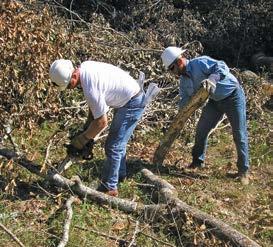

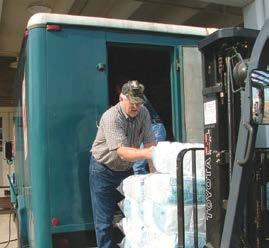




























A group of 84 rising high school seniors from across Mississippi traveled to Washington, D.C. in June to attend the 2025 NRECA Youth Tour.
The trip was the culmination of the students' participation in the Electric Cooperatives of Mississippi’s youth leadership program.
The program instills leadership skills in the students, informs them about the electric cooperative form of business, and teaches them about the democratic form of government at both the state and federal levels.
During a March workshop in Jackson, the students had the opportunity to meet and hear from state legislators.
While in Washington, D.C., the students and adult chaperones visited historic sites, monuments, museums, and had an opportunity to learn about the impact electric cooperatives have on their communities.
The students also had an opportunity to tour Capitol Hill with former U.S. Congressman Gregg Harper of Mississippi.










Harper shared with the students about his experience as a congressional leader and complimented the electric cooperative program, saying that he “is proud of this program because his daughter participated in it, and it was one of the best programs that she participated in while in high school.”
it, and it was one of the best programs that she
The students attended a Washington Nationals
The students attended a Washington Nationals pro baseball game, experienced the play “Les Misérables” at The Kennedy Center, and had dinner during an evening cruise on the Potomac River.

The students were chosen by their local electric cooperative.
The Cooperatives Youth Leaders program is fully funded — including the trip to D.C. — by the local electric co-ops as a commitment to molding future leaders for Mississippi, so they can impact the state and local communities.


































If you're tired of having knee pain and want to talk to a doctor that can virtually give you your life back if knee pain is an issue, call Dr. Rob Acord... as he's the only doctor in the area... who has this newly discovered knee pain reduction technology.
If you have knee pain, can't walk because of an old injury, or you just think it's part of getting old, you might want to read this article.
Knee pain is something that disables a lot of people every single year, but most people don't know what to do about it.
Some people immediately opt in for surgery, then some people watch TV and end up buying something they wrap their knee with-hoping it will help, and others just follow orders and take medications which simply block the pain signals while the underlying condition often progresses.
All I'm saying is this. There are a lot of ways to TREAT your knee pain, but which one will really work?
If you've done your research, you know that there are not a lot of things that really work when it comes to actually helping align the knee, taking nerve pressure off the knee, and reducing the pain and swelling.
What if there was a "real solution" that worked from DAY ONE?
Hi, I'm Dr. Rob Acord and I'm here to tell you about a new device called the K.P.R.
I stumbled onto this one-of-a-kind machine at a recent medical conference and tried it myself. THE RESULTS: My knees have never felt so good, and that was after.... just one treatment.
It virtually reduced my knee stiffness by 95%, so I am positive it'll help your knee pain, help you walk better as soon as you get your first treatment, plus help you do some things you used to do without the help of a walker, cane, or someone else helping you

Now, don't get me wrong. I'm not guaranteeing a miracle if you haven't walked in many years.... but this just may be the answer you've been looking for.
Better late than never for sure. You should entertain this option... no matter what's happened to you in the past!
Let me be very clear; I'm here to possibly help you:
Get out of pain
Walk better
Move better
Get up and down better
Get out of chairs easier
AND...
Finally you will be able to move without relying on someone or something else
"What if my knee(s) are BONE ON BONE?"
Here's all I can tell you If you’re bone on bone, and surgery is not an option for you, or surgery didn’t work, this may be the exact treatment you’ve been needing
You'll find out that K P R is an amazing machine when teamed up with our Class IV laser therapy
Great questions and here's the answer: We have a reputation for getting great results, but if you're like most of our patients you know that the knee problem isn't going to just go away on its own. We're also known for our personalized care We don't promise the world, but we will do everything humanly possible to get the results you want.
"I've NEVER done this before!" I'm going to offer you a consultation, knee examination, X-Rays, and TRIAL VISIT for only
$47 $47
We'll know almost IMMEDIATELY if we can help and most importantly, YOU WILL TOO
As you know, it's human nature to procrastinate; this is not the time to do that... WHY?
My Trial Offer goes away at the end of this month It's available as a hard deadline because I have a limited number of trial spots and we are already an extremely busy office. Pick up the phone and call the office now This one call could change the way you walk, feel, and move CALL TODAY! Dr. Rob Acord, D.C.

























by Rick Cleveland
The Mississippi Sports Hall of Fame Museum, complete with a $4 million facelift, a new class of inductees, and a new executive director, has begun its 30th year of operation on Cool Papa Bell Drive, just o Lakeland Avenue in Jackson.
These are exciting times at Mississippi’s sports shrine, and we will get to all that, but now seems an appropriate time to go back to the museum’s beginnings. This was February of 1992 and bright sunshine was streaming through the windows on the ground level concourse of Mississippi Coliseum. The early afternoon sunlight cast revealing light on the plaques of the Mississippi Sports Hall of Famers that decorated the concrete walls. Some of the plaques
were badly scratched and nearly all were sadly faded by the sun.
I had been in a hurry to get to my press row seat at the state high school basketball tournament, but something about that the sunlight on those faded plaques of Mississippi legends, such as Bruiser Kinard, Lucy Harris, Dizzy Dean, Boo Ferriss, Bailey Howell, and Ralph Boston, stopped me.
I wrote about the need for a sports museum to properly celebrate something our state does incredibly well.
It just seemed so wrong, such a sad way to show o Mississippi’s incredible sports heroes and history. So, I skipped the games and went back to my Clarion Ledger o ce and wrote a column for the next day’s newspaper about how Mississippi could – and should – do better.
I wrote about the need for a sports museum to properly celebrate something our state does incredibly well.
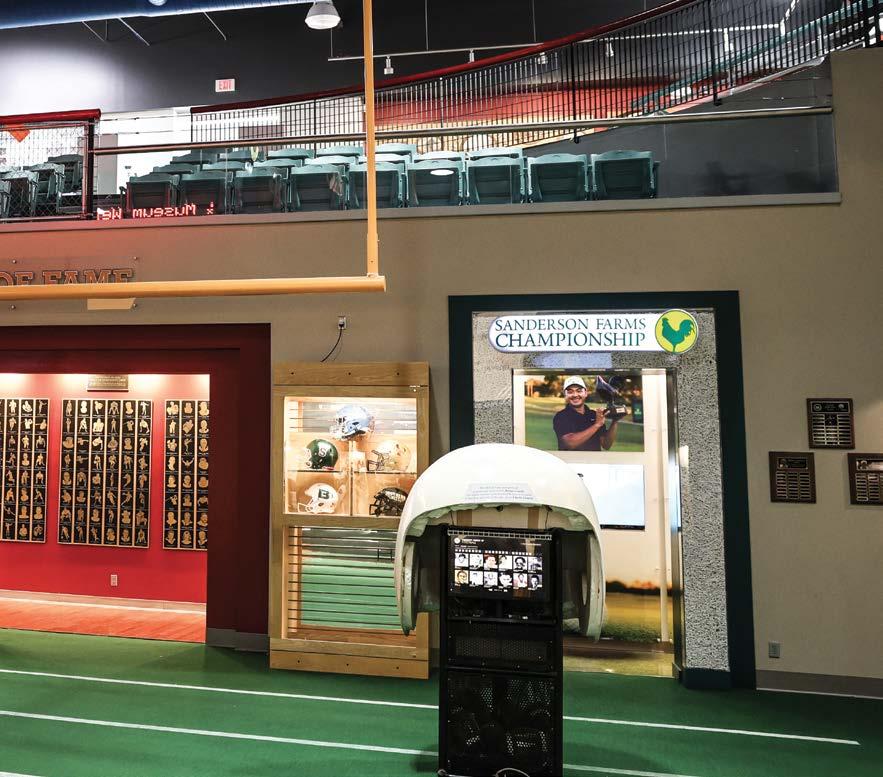
The next day, my o ce phone ring and the bright, female voice on the other end, said hello and then, “Could you please hold for Commissioner Ross?”
My immediate thought was this: “What league has a commissioner named Ross and what have I written to tick him o ?” After several seconds of silence, a deep, gravelly voice with a decidedly Southern drawl, introduced himself as Jim Buck Ross, the state commissioner of agriculture. “Son, I read your column today, and I like that idea,” Ross said. “Do you want to make it happen?”
He said he wanted me to come to his o ce ASAP. He said he had a plan. Ten minutes later, after telling me what a huge fan he was of Boo Ferriss and Dizzy Dean, he divulged his plan. He said as agriculture commissioner, he controlled the soft drink rights to the State Fairgrounds, Mississippi Coliseum, Veterans Memorial Stadium, and the new agriculture and forestry museum. He said he was going to re-bid those soft drink rights, raise a million dollars, and then go to the Legislature to raise the rest. He said he already had the land, right next to the ag museum that bore his name.


































Ross said he wanted to integrate the poorly attended Dizzy Dean Museum, across the parking lot next to Smith-Wills Stadium, into a museum that would house the Mississippi Sports Hall of Fame. I told him I loved the idea, but added, skeptically, “Doesn’t Coca Cola already have those soft drink rights?” And I will never forget his answer: “Yes, son, they do, but, they are fixin’ to pay a whole lot more.”
Eventually they did.
Then, Ross, with a million dollars in seed money in hand, went to the Legislature to ask for two million dollars more. Many saw first-hand how politically astute Ross, a former mayor of Pelahatchie, was. He made things happen. Meanwhile, a group of civic leaders and sports enthusiasts began meeting on a regular basis to beat the drum and hold fundraisers for Jim Buck Ross’s idea. Former sportscaster Michael Rubenstein became the voice of the movement. Former Gov. William Winter, perhaps the state’s No. 1 sports fan, got involved. Sports heroes such as Ferriss and Archie Manning lent strong support to the e ort. Wood Brown, Ross’s right hand man, played a vital role. So did Charlie Williams, former Ole Miss baseball star and Gov. Kirk Fordice’s chief of sta , who used his considerable influence with the Legislature. Instead of two million more, the Legislature signed on for an additional three million.
So, on July 4, 1996, the Mississippi Sports Hall of Fame and Museum opened its doors with Rubenstein as its first director. Jackson-based Communications Arts, led by Hap and Hilda Owen, did incredibly exhaustive research, conducting lengthy taped interviews with all Hall of Famers and future Hall of Famers who literally tell the story of Mississippi’s remarkable sports history through the interactive kiosks at the museum.
Touch a screen and you can hear the great Shorty McWilliams, who died in 1997 not long after the museum’s opening, tell the story about the first time he played for Mississippi State at Tiger Stadium in Baton Rouge. Shorty Mac was punting out of the south end zone in pregame warmups.
“Unbeknownst to me, they rolled up Mike the Tiger in that cage right behind me,” McWilliams says, smiling. “They had a microphone in that cage, and when that 500-pound tiger roared, it scared me so bad. It scared the (bleep) out of me. I ruined myself. I had to play that whole game in those soiled britches.”
Touch another screen and you can hear about Willie Mitchell, the first Mississippian to pitch in the Major Leagues after he graduated from Mississippi A&M at age 19. Mitchell used a breaking pitch he called the “Willie Ball” to throw a perfect game at LSU, striking out 26 of 27 batters. Incredibly, later that same year, Mitchell found himself locked in a Major League pitcher’s duel with Walter “Big Train” Johnson, winner of a remarkable 417 Big League games. The Big Train got one of those 417 victories that afternoon, but it took 12 innings before the Senators beat Willie Mitchell’s Cleveland Indians 2 to 1. Three months later, Willie Mitchell, from Pleasant Grove, Mississippi, turned 20.

These eight Mississippi sports heroes were inducted into the Hall of Fame on Aug. 2, 2025.
Scott Berry – Former USM head baseball coach.
Steve Freeman – Former football player at Mississippi State and the Bu alo Bills.
Mike Justice – He coached high school football in Mississippi and won three state championships.
Dexter McCluster – Former Ole Miss football player and Kansas City Chief.
Derrick Nix – Former USM running back and former Ole Miss running backs coach.
Steve Rives – Former Delta State and Jackson Prep basketball coach.
Robbie Webb – Former USM golfer, golf coach, and professional golfer.
Mo Williams – Jackson native, former NBA player, and current head basketball coach at Jackson State.




For more information about the museum, visit msfame.com or call 601-982-8264.
The stories are as endless as they are remarkable. You can hear the late Ralph Boston of Laurel talk about walking into the Stadia Olympico in Rome for the 1960 Olympic Games at age 21.
“I was just a bright-eyed, skinny kid from Laurel, Mississippi, who didn’t know which way was up,” Boston said. “And then I walk into that stadium with 80,000 screaming people, and there are more people than I had ever seen in my life. I thought, ‘Man, what have I gotten myself into here.’” Boston, of course, won the gold medal in the broad jump. That was the first of three Olympic medals he would win over 12 years. As his gold medal was presented, 80,000 voices in that same Olympic stadium chanted, “Boston! Boston! Boston!”
Touch another screen and you can hear Boo Ferriss talking about pitching to Stan “The Man” Musial in the 1941 World Series. “I finally figured out a way to get Musial out,” Ferriss said. “Walk him and then pick him off.”
A treasure chest and then some of artifacts from the old Dizzy Dean Museum are housed on the second floor of the Hall of Fame Museum. Dean’s 1937 National League Most Valuable Player trophy is housed there. Punch a button and you can hear Ol’ Diz sing the “Wabash Cannonball.”
The Olympics Room on the first floor features Boston and so many more Mississippians who have represented their country – and their home state – in every summer Olympics since the Games were resumed in 1896.

In Mississippi we have a sports history second to none. Our never-ending goal is a museum, second to none, that tells that history.
As noted at the beginning of this historical perspective, the Mississippi Sports Hall of Fame’s 30th year begins with a new executive director. Andrea Patterson, who first joined the museum team as an intern fresh out of Ole Miss in 2012, took over on June 1. She replaced Bill Blackwell, who retired after nine years with the museum.
Workers this summer are completing a badly needed $4 million renovation project to the 30-year-old building. New, much improved kiosks, sponsored by the Gertrude Ford Foundation, will make the museum more user friendly. Patterson’s next goal is to update existing exhibits and bring more interactive exhibits to the museum.
“In Mississippi we have a sports history second to none,” Patterson said. “Our never-ending goal is a museum, second to none, that tells that history.”
On the morning of July 4, 2025, more than 1,500 Watermelon Classic runners and walkers gathered at the museum on its 29th birthday. It was the largest crowd in several years for the annual Hall of Fame fund raiser.
Jim Buck Ross, the man who more than anyone made it happen, would surely approve.
Rick Cleveland, a 2017 inductee in the Mississippi Sports Hall of Fame, is the most awarded sportswriter in Mississippi history.





















































Predicting the future is tricky for any subject, but especially for sports. How about if you are a college football fan of Mississippi State, Ole Miss, or Southern Mississippi? You want to give it a try? Before giving it your best shot, remember the unexpected events and unforeseen injuries – as well as other variables – that can alter the course of a team’s success. Read the following recaps and observations and see what you think about your favorite Mississippi team.
When you only win one game, a change becomes necessary. So, The University of Southern Mississippi Athletic Director Jeremy McLain went out and hired Marshall football coach Charles Hu , who had just led Marshall to the Sun Belt football championship. Hu made the move to Hattiesburg and drastically changed the roster overnight, bringing in 50 transfers — 21 of those from his former school.
Hu brought last year’s Marshall quarterback Braylon Braxton to lead the Golden Eagle o ense. The senior led the Thundering Herd to an 8-0 record as the starter. The Frisco, Texas, native threw for 1,624 yards and 19 touchdowns. The 6 foot 2, 225-pound Braxton was only intercepted twice last season. He also rushed for 640 yards and had four rushing touchdowns.
If you look at the depth chart on o ense, 10 transfers are penciled in as starters. Tight ends Kyirin Heath and Reed Jesiolowski and o ensive guard Greg Nunnery return. USM’s receiving corps was depleted, so Hu brought five of his Marshall receivers. The running back position added two transfers in Jackson’s Matt Jones and Taylorsville’s Je ery Pittman. In addition to Nunnery returning, five more o ensive linemen transfers were signed.
The defense added five transfers to help run the 4-2-5 defensive set. Eric Thomas and McCombs’s Jameer Lewis return at defensive end while Brodarius Lewis is back at right tackle. Sophomore Chris Jones of Byram returns at linebacker along with cornerback Brendan Toles of Oxford.
USM will host seven home games this year. They begin the season hosting Mississippi State and Jackson State on back-to-back weekends.
The Golden Eagles should be very much improved talent wise with the influx of experienced transfers.

Lane Ki n, as he has done the last several years, hit the NCAA transfer portal in earnest. The reason was simple: he lost 14 starters from last year’s 10-win team.
Ki n always runs a high-octane o ense, and this year will be no exception. QB Austin Simmons will have a learning curve as he tries to replace Jaxson Dart. Simmons has the makings of being a top-notch signal caller. Ole Miss has Cayden Lee returning at receiver and has added five receivers plus the top Mississippi high school receiver in Weir’s Caleb Cunningham, along with Oklahoma State’s De’Zhaun Stribling, and Penn State’s Harrison Wallace. Simmons will have tight end Dae’Quan Wright back along with running back Logan Diggs. The line is led by returning center Brycen Sanders, guard Diego Pounds and tackle Jayden Williams. Ki n has also brought in Arkansas transfer Patrick Kutas along with five more o ensive linemen.
The Rebel’s defense was one of the best in the SEC last season. The linebackers, led by Raleigh’s Suntarine Perkins and T. J. Dottery, are talented. The Rebels brought in four defensive backs to help the lone returner in Nick Cull in the 4-2-5 defensive scheme. They also signed two linemen out of the portal to go with Germantown’s Zxavian Harris (NT) and Moss Point’s Jamarious Brown (DT). The Rebels brought in LSU’s Da’Shawn Womack and Nebraska’s Princewill Umanmielen to aid in the rebuild.
The Rebels’ schedule has no Texas, Texas A&M, Tennessee, Auburn, Missouri, or Alabama. So, a run to Atlanta is not out of the picture. The big unknown is if Ole Miss can replace eight defensive starters from the 2024 team.


Mississippi State football coach Je Lebby has more talent this season than he had in his first season in Starkville.
The o ensive line is a big question mark, and the Bulldogs’ success in 2025 will depend on returners Luke Work, Albert Reese IV, and Jacoby Jackson plus the addition of three transfers.
If quarterback Blake Shapen stays healthy and upright, the o ense will be better. Floridia State transfer quarterback Luke Kromenhoek and Macon’s Kamario Taylor provide depth. The talented Davon Booth returns at running back while Seydou Traore returns at tight end. The Bulldogs return Jordan Mosley at receiver but bring in six new receivers.
The defensive line lacked a pass rush last season, so Lebby brought in end Red Hibbler to go with defensive tackles Will Whitson and Crystal Springs’ Trevion Williams. The versatile Brylan Lanier also returns. Branden Jennings, Nic Mitchell, and transfer Jalen Smith will take care of the linebacker duties while Kelly Jones, Hunter Washington, and Fulton’s Isaac Smith will join transfer Dwight Lewis in the secondary.
The SEC schedule is daunting both at home and on the road. If the o ensive and defensive line play improves, the Bulldogs should have more wins in 2025.

by Dale McKee
Dale McKee is a Waynesboro native who has been writing about sports in Mississippi since 1973. He is a member of Dixie Electric. Contact him at ddmckee18@yahoo.com.












One-pan version quick, easy, and yummy



One-pan pasta is a quick and easy, family-friendly meal that anyone can prepare with minimal fuss. All the magic happens in one pan from start to finish. It’s ready in 20 minutes or less and offers endless customizable flavor options to keep your family well-fed and satisfied.
You can use any pasta, but please note that the cooking time will vary depending on the specific variety. Linguine, spaghetti, fettuccine, and angel hair are the most popular — however, short pasta shapes like elbow macaroni, rotini, or bow-tie pasta work well too. Regardless of the type of pasta, be sure to season it before bringing it to a boil, allowing the pasta to absorb the full flavor as it cooks.
Next, pick your vegetables. Good choices include fresh or frozen tomatoes, zucchini, bell peppers, spinach, mushrooms, broccoli, and carrots — other vegetables, such as peas, corn, or cauliflower, also work well. Experiment with different combinations to find your family’s favorites.
Adding a protein is optional, but it needs to be cooked first. Chicken, shrimp, ground turkey, and Italian sausage are ideal choices. You can also consider incorporating beans, chickpeas, or lentils for a plant-based protein boost.
Place all the ingredients together in a large pan, skillet, or pot. Ensure that the pasta and ingredients fit easily in the pan. It’s better to have a bigger pan than needed than a one that’s too small. Add about 1 cup of liquid for every 2 ounces of pasta; the goal is to cover the pasta completely with liquid.
Keep in mind that ingredients like mushrooms will absorb liquid, while tomatoes or zucchini will release liquid. If the sauce is drying up before the pasta thoroughly cooks, add more liquid. Get creative with the liquids; one of the easiest ways to add more flavor is to substitute water with chicken or vegetable broth.
Bring the sauce and pasta mixture to a boil, then lower the heat to allow the pasta to cook and absorb the liquid. The important part now is to stir the pasta with the ingredients constantly. Use a large-slotted spoon, fork, or tong. Stirring along the way ensures that no pasta gets left behind and stuck on the bottom.
When the pasta has absorbed 80-90% of the liquid, add parmesan cheese if desired. The dish is ready when the pasta is al dente. And just like that, you can put a weeknight meal on the table — minimum cleanup, but maximum taste!

by Rebecca Turner
1 tablespoon olive oil
2 tablespoons minced garlic
2 tablespoons butter
8 ounces uncooked linguine noodles
2 cups chicken broth
½ teaspoon salt
¼ teaspoon pepper
1 cup warmed cream
½ cup fresh shredded parmesan cheese o the block
1 tablespoon fresh minced parsley for garnish (optional)
In a large pot or skillet over medium-high, heat olive oil and add garlic. Stir and cook until garlic becomes fragrant and just starts to brown; about 1 minute. Warm cream in the microwave for about 30 seconds.
Add pasta, salt, pepper, butter, chicken stock, and warm cream. Stir and bring to a boil.
Reduce heat to medium-low, cover and simmer for 10-15 minutes, stirring occasionally, until the liquid has nearly evaporated, creating a sauce.
Remove from heat, toss pasta, and gradually stir in parmesan cheese. Garnish with fresh minced parsley, if desired.
INGREDIENTS
8 ounces uncooked linguine pasta
1 pint cherry tomatoes sliced in half
2 ounces baby spinach
1 small onion, finely diced
1 tablespoon garlic, minced
1 handful fresh basil leaves, roughly chopped
2 tablespoons extra virgin olive oil
½ teaspoon salt
2 ounces parmesan cheese, grated (optional)
4 cups vegetable broth (or water)
In a large deep pan, place the linguine in addition to the cherry tomatoes, spinach, diced onions, garlic, and basil. Drizzle the olive oil on top and season with salt.
Add broth to the pan and bring the mixture to a boil. Cook for 10-15 minutes on medium heat, stirring occasionally, until the liquid has nearly evaporated, creating a sauce.
Remove the pan from heat and stir in parmesan cheese and fresh basil (optional). Serve immediately.




Events open to the public will be published free of charge as space allows. Submit details at least two months prior to the event date. Submissions must include a phone number with area code for publication. Email to news@ecm.coop. Events are subject to change.
The Calhoun County Sacred Harp Convention. Aug. 9 Vardaman. The event will be hosted at Mt. Herman Primitive Baptist Church 163 County Rd 427 (Hollis Switch Road), approximately 3 miles west of Vardaman. Singing starts at 10 a.m. with lunch in the fellowship hall at noon. Adopted tune books for this singing are the 1991 Sacred Harp and the 1911 Sacred Harp (J.L. White Edition). Details: 662-507-9434.
Big Gospel Singing Jubilee. Aug 23. Magee. The show begins at 6:30 p.m. at the Magee High School Auditorium. Performers include The Freemans, Mississippi Agricultural Commissioner Andy Gipson, Tim Frith and the Gospel Echoes, Revelations, and Gil Magee. Details: 601-906-0677 or 601-720-8870.
The Mississippi Sacred Harp State Convention. Aug 23 and 24. Forest. This event will be hosted at Antioch Primitive Baptist Church, 6931 Miss. Highway 21, about 6 miles north of Forest. Singing begins at 10 a.m. on both days. Adopted song books are the 1991 Sacred Harp, B.F. White Sacred Harp (Cooper Book), 2010 Christian Harmony, and the 1911 Sacred Harp (J.L. White Edition). Details: 601-940-1612 or email marksdavi19@gmail.com.
The St. Mary Catholic Church Inaugural Fandango. Aug. 31. Biloxi. The event will feature live music by Hank Berumen, craft vendors, info booths, a medieval reenactment group, water slides, food booths, bingo, bocce, horseshoes, a beanbag toss, giveaways, and raffles. The event begins at noon at 8343 Woolmarket Rd. Details: 228-392-1999.
Gulf Coast Military Relics, Antique Arms, and Collectibles Show. Sept. 5 and 6. Biloxi. 11 a.m. to 4 p.m. at The Joppa Shriner’s Center, 13280 Shriner’s Blvd. Admission is $7, and parking is free. Historical military artifacts from all periods and wars bought, sold. And traded. Items include helmets, firearms, swords, bayonets, uniforms, flags, medals and other items. Details: 228-224-1120 or email terrell.hamilton@gmail.com.
Harrisville Day. Sept. 27. Harrisville. The event will be held at 1767 Harrisville Community Park. Fun, food, games, music, bounce houses, vendors and car show. Firefighters will be cooking barbecue. The event starts at 8 a.m. Details: 624-927-0445 or 601-942-1480.
The Magee Chamber of Commerce Fall Festival. Oct. 25. Magee. The downtown free festival is held on Main Street from 8 a.m. to 4 p.m. The festival will feature a 5K run and walk, arts and crafts, food vendors, an antique car show, a chicken show, activities for kids, and live entertainment featuring Vintage 601 and other acts performing from 2 p.m. until 6 p.m. Details: 601-849-2517.






















I heard a statistic the other day either at work or on Facebook or one of those news feeds that continually populates my phone screen. The stat was that 25% of the families who own houses with two car garages in America have to park outside because they use their garages for storage.
My mind cast itself out to my garage which has long since been a workshop for my old radios (which are stored there, too), and a repository for odd pieces of furniture that wandered to our house over the years. Mama’s old Singer sewing machine is parked in there as well. The tables make dandy workbenches for the carpentry projects which are also carried out in the garage. There’s a table saw in there too, somewhere.
The stat was that 25% of the families who own houses with two car garages in America have to park outside because they use their garages for storage.
And, of course, some of my finished carpentry projects take up space in the garage as well. There are also cabinets for Christmas decorations, assorted light bulbs, a stash of unsold DVDs of my television stories, and books of all sorts. If you look, you can probably find some National Geographic magazines inside too.
Our garage houses things we picked up at flea markets years ago because Grandma had one of them when I was a kid. My record collection is also inside the garage.
I feel like I may have turned a corner with my compulsion for vinyl. A friend called the other day and told me one of her neighbors was getting rid of their father’s old stash of LPs and 45s, and they o ered them to her. But she’s already cleaned out her stu . I got her Daddy’s tape recorder that he had used to record a weekly radio program of organ music. I don’t know who got the organ. Anyway, she asked if I wanted the records. I surprised myself when I told her no.
Not that I didn’t want them. But I would have had to build another set of shelves on which to house them. And lately, I can’t find my table saw. I know roughly which part of the garage it’s in; I think.
Now, some people might consider all of this stu in my garage as just clutter, and I suppose it is. But it is something else, too.
At the Bentonia Blues Festival recently I was talking to Jackson bluesman Bobby Rush. He is 91. He told me that he has been performing at least 200 concerts a year for the last 50 years. This year will be no exception. How does he keep going? He said his secret is this — you must have a reason to get up every morning. He said he has plenty!
Well, in that case, my garage has provided me decades of reasons to get up every day — cleaning, sorting, throwing away, and collecting more stu .
Plus, I have to find that table saw!


by Walt Grayson
Walt Grayson is the host of “Mississippi Roads” on Mississippi Public Broadcasting television and the author of two “Looking Around Mississippi” books and “Oh! That Reminds Me: More Mississippi Homegrown Stories.” Walt is also a reporter and 4 p.m. news anchor at WJTV in Jackson. He lives in Brandon and is a Central Electric member. Contact him at walt@waltgrayson.com.


























































































